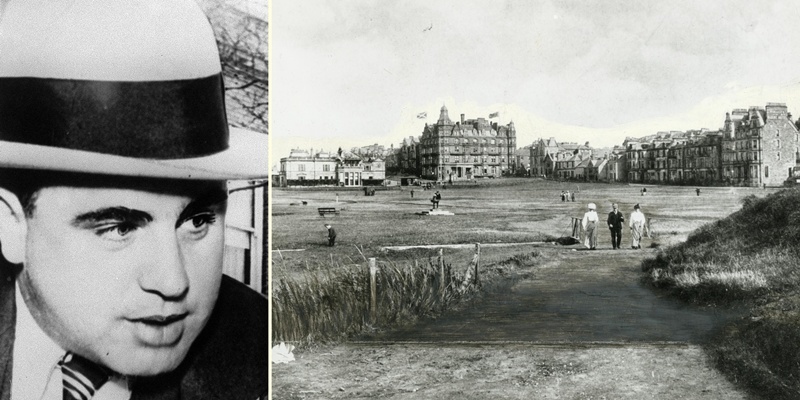He was the most notorious mob boss in US history who, according to legend, never ventured beyond New York City or Chicago, places he ‘ruled’ during Prohibition in the 1920s.
But in a book about the murderous Mafia don, his grand-niece has painted an intimate portrait of Al Capone as the ‘Golf-father’ a man who adored Scotland and made a secret trip to play golf at the Old Course in St Andrews.
In her book, Uncle Al Capone: The Untold Story From Inside His Family, Deirdre Marie Capone tells how the gangster travelled across the Atlantic to negotiate the ‘import’ of whisky and at the same time found time to indulge his passion at the Home of Golf.
The infamous bootlegger took the opportunity to play at some of the country’s top golf courses and even bought a set of handmade clubs with his initials engraved in the heads.
”He was in love with the game and with Scotland,” says Mrs Capone (72). ”I remember seeing his bag of clubs in the house in Miami where he lived. He told me they’d been made for him in Scotland.”
She said Capone sailed to Britain under a false identity, and is believed to have played rounds at St Andrews, Turnberry and Muirfield, where he met businessmen and crooks involved in exporting alcohol.
Earning $28 million a year in the 1920s by satisfying the illicit demand for alcohol in the US, he slipped out of Chicago to visit Scotland.
Armed with false papers, he sailed for Britain with his personal caddy, a gun-toting thug who doubled as a bodyguard.
While he was in Scotland, hand-picked professionals apparently pocketed large fees for giving him lessons and, if they recognised their student, keeping their mouths shut.
Mrs Capone, a mother-of-four, said the man who ordered the St Valentine’s Day Massacre in 1929 was sick of gangland life by the time he left jail in 1939.
She said: ”Al would tell my grandfather, ‘I’ve got to get out. I’ve been shot, almost poisoned and there’s an offer of $50,000 to any man who kills me’.
”Maybe if he’d taken another trip to Scotland to relax, he’d have lived longer. I could see him buying a home in St Andrews”.
Capone led a $100million Chicago crime syndicate until he was arrested by Federal agent Eliot Ness and his team, The Untouchables, and jailed in 1931.
He was paroled in 1939, but syphilis caused his mental health to deteriorate.
In 1947 he died almost penniless, on Deirdre Marie’s seventh birthday, from cardiac arrest after suffering a stroke.
Photo by PA Archive
